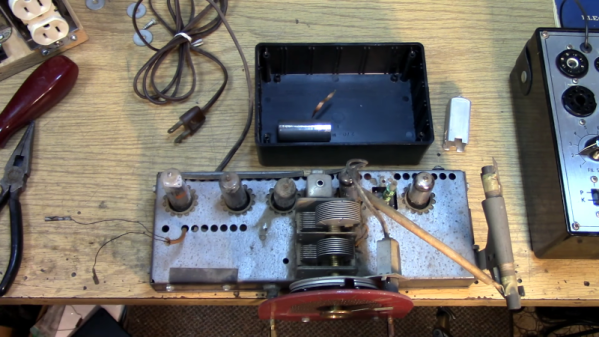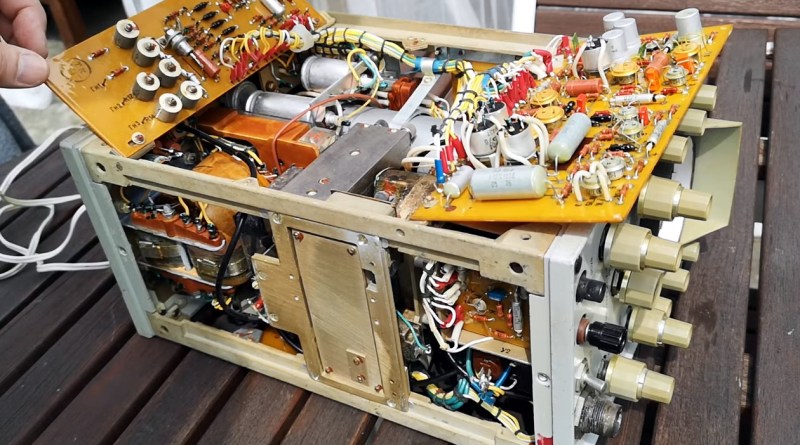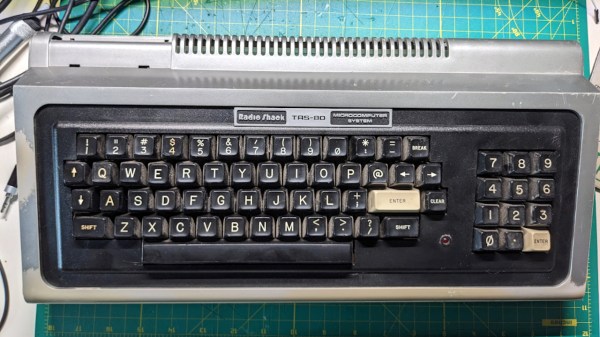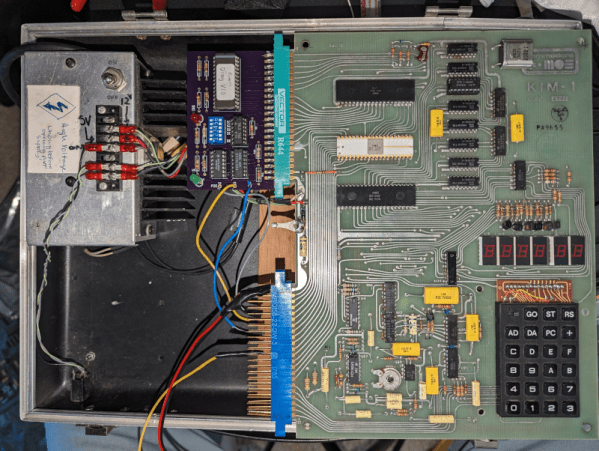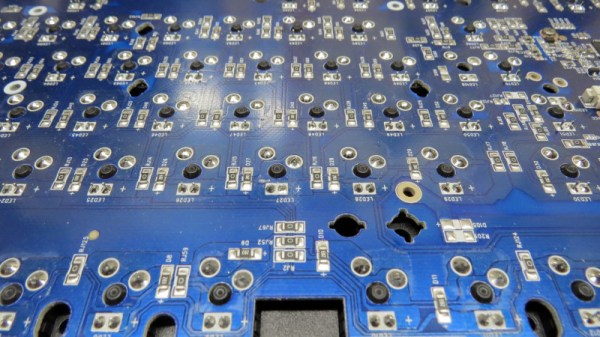If you haven’t heard of an “all-American five,” then you probably don’t dig through bins for old radios. The AA5 is a common design for old AM radios that use five tubes: a rectifier, an oscillator/mixer, an IF amplifier, a detector, and a single tube for driving the speaker. [Mikrowave1] took an old specimen of such a radio from the mid-1950s and wanted to restore it. You can see how it went in the video below.
One feature of the design is that the set had a “hot chassis,” which means you really want to use an isolation transformer before you work on it. We were taught to touch a chassis with the back of our hand first because of radios like this. If it is “hot,” the muscle contraction would throw your arm away from the radio instead of forcing you to grip it uncontrollably.
The GE radio had many quality design touches you don’t always see in a radio like this. The mix of brands indicates that the radio has had tubes replaced in the past. It also had a clearly replaced electrolytic capacitor. Surprisingly, all the tubes were good, although the power output tube was marginal. However, a light bulb was bad and required a little surgery to allow for a slightly different replacement.
Some capacitors were neatly replaced, also. A lot of cleaning and testing later — along with a dropped tool — the radio was ready to play again. Fixing radios from this era is a great hobby. You can get to everything and you don’t really need anything fancy, although a tube tester is helpful. The classic method of troubleshooting is to either find audio on the volume control or not and then work your way backward or forward using a signal tracer or — since they are so readily available now — a scope. Alternatively, you could inject a signal at the volume control and work your way through the circuit until you can or can’t hear the injected signal.
Not the first tube radio we’ve watched being restored, of course. Need a tube tester?

